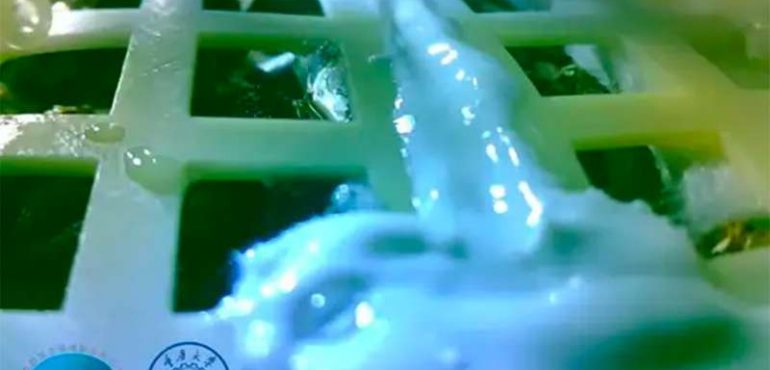A sprouting cotton seed on China’s Chang’e 4 lunar lander is the first plant ever to germinate on another world, heralding a new era for life in space.
Seeds of cotton, oilseed rape, potato and arabidopsis were carried to the moon as part of a biosphere experiment, along with fruit fly eggs and some yeast.
Pictures sent back by the probe show cotton, rape and potato seeds sprouting and growing well, the scientist leading the experiment, Liu Hanlong, told South China Morning Post. Chang’e 4 landed on the far side of the moon on 3 January and this image was dated 7 January.
The organisms are kept in a sealed chamber, protected from the extreme temperatures and intense radiation on the moon’s surface. Understanding how to grow plants in space will help lay the foundation for establishing a human settlement on the moon, Liu said.
The six organisms could make up a mini-ecosystem, with plants producing oxygen and food to sustain the fruit flies. Yeast could process the flies’ waste and dead plants to provide another food source.
In a future human settlement, potatoes could provide food, rapeseed could be a source of oil and cotton could be used for clothing.
Plants have been grown before in orbit in the International Space Station, including cucumbers. Astronauts got their first bites of space-grown romaine lettuce in 2015. Algae have even managed to survive 530 days on a panel on the outside of the space station.
Source: New Scientist, Full Article






